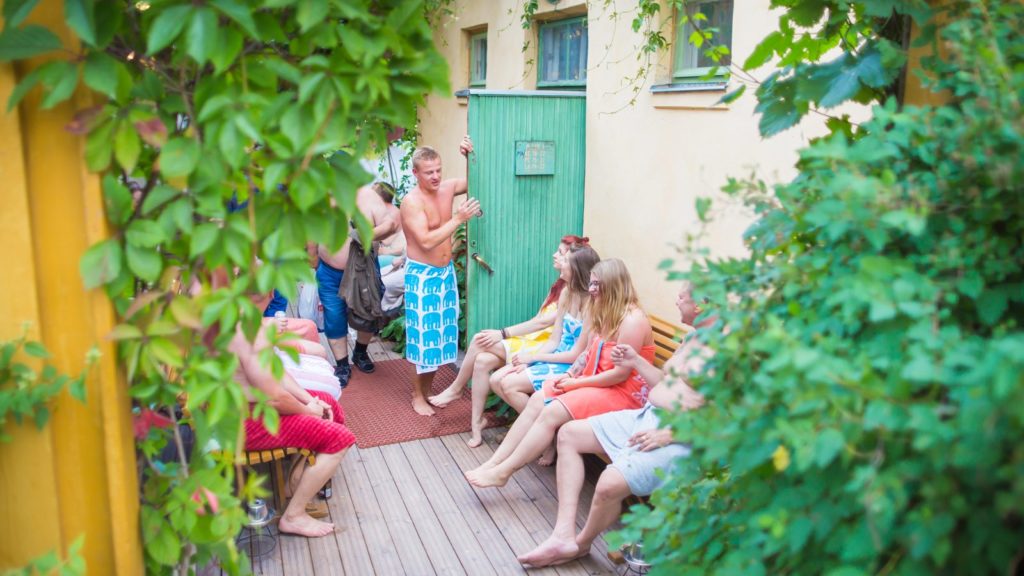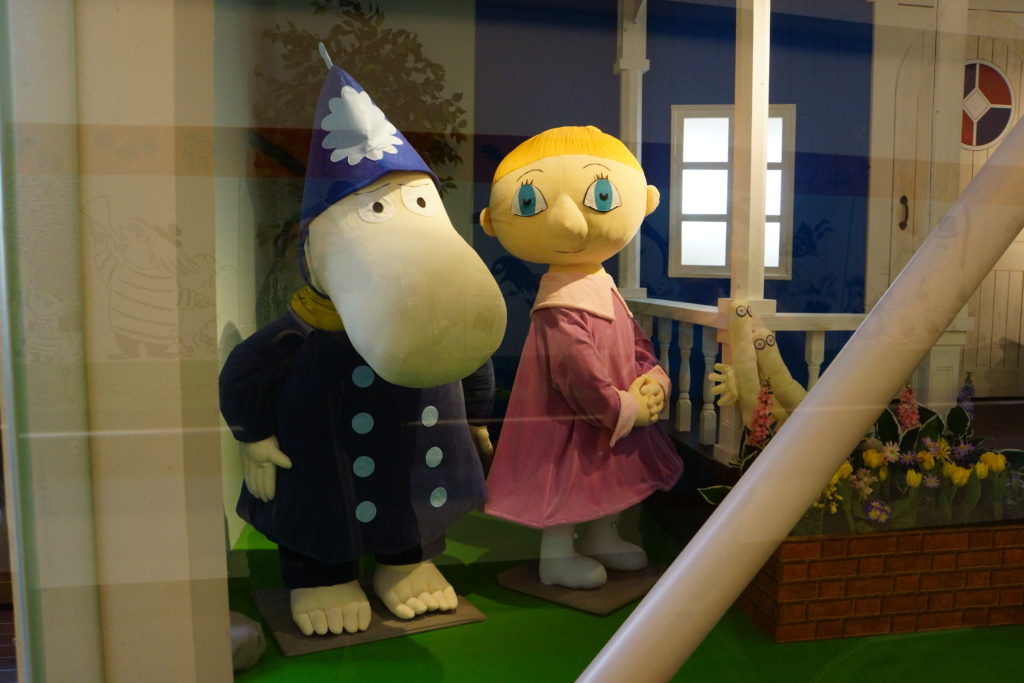 Mal Rogers travels to Finland's third city
Mal Rogers travels to Finland's third city
One day way back in 2004, the Irish people woke up one morning to the wonderful news that we were the happiest people in the world. We’d long known we were amongst the chummiest nations on earth, and certainly amongst the partyiest, but the happiest? Joy was unconfined,
But some people weren’t happy about it.
In fact some nations were so unhappy about the results that the differential they created only increased our own happiness quotient.
Whether this also applied to the Irish in Britain wasn’t revealed in the survey. But I like to think we were the Happiest Diaspora in the World.
But today, it’s all academic. Because for the last five years Finland has been placed at No 1 in the World Happiness Report. We appear to have fallen to what I can only describe as a miserable no 13 in the last report. And it’s odd. A celebrated Finnish joke goes:
Jarkko: "Yesterday marked 21 years since I arrived in Finland."
Jani: "Did you celebrate with a beer and a sausage?"
Jarrko: "No. I've become Finnish. I told no one. I sat in the dark in silence and thought about herrings."
Jani: "That's the spirit."
I was mulling over this self-perception of the Finnish character en route from Helsinki to Tampere. Notwithstanding Jaskko and Jani, I released that perhaps the things that make a country happy, quite often don’t have much benefit to the tourist — ace health service, excellent education, exemplary crèche facilities and so on. Now, I know that’s a pretty churlish thing to say, but as tourism is a reasonable slice of the Finnish financial economy I thought it might be worth bringing up in conversation.
I mentioned it to my guide in Tampere, Aino, but it didn’t wipe the smile of her face. In fact she was incorrigible. Happy, really. Thoughts of Jarrko and Jani wafted away as inhaled wisps of smoke from a birch fire. Undoubtedly firing up someone’s sauna.
Our first stop was Pyynikki Observation Tower at the top of the hill.
Finland is not particularly blessed with mountains, so you get an utterly splendid panorama of ancient forests —gnarled birch, hazel and ash — and lakes stretching into the distance, northwards beyond the Arctic Circle.
But it was time for lunch.
Kanttarellinokkoskiusausta is probably the longest dish I’ve ever ordered – a potato and mushroom combination, served with salad and delicious reikäleipä. This flat round rye bread with a hole in the middle is ubiquitous, and traditionally stored on poles suspended under the ceiling. As well as the usual bready things like dark rye flour, it has three magic ingredients: beer, butter and soured milk.
To be fair, Aino did the ordering. Finnish is, after all, not an Indo-European language. Good afternoon is “hyvää iltapäivää”; so I’ve always felt sorry for the Guardian journalist who said the author of an article carried by his newspaper from Finland’s Helsingin Sanomat newspaper, was Jatkuu Seuraavalla Sivulla. A reader subsequently advised him this was not the author’s name but the Finnish for “continued on the next page”.
But don’t fret. In the restaurants and cafes, in the hotels and shops, English is widely spoken.
The wide, wide main street Hameenkatu – more reminiscent of somewhere in Canada - is well equipped with kanttarellinokkoskiusausta outlets, as well as upmarket shops and department stores.
 An exhibit at the Moomin Museum (Wikimedia)
An exhibit at the Moomin Museum (Wikimedia)The lie of the land
The city of Tampere lies on an isthmus situated between Lake Nasijarvi and Lake Pyhajarvi in the south. The Tammerkoski rapids that run through Tampere connect the two lakes, with a fall of 18 metres. In the 7th century a population of fledgling Finns started to gather at this connecting point of two waterways, but it wasn’t really until the 18th century that people started to understand the importance of the rapids as a way of making hydropower.
The history of Tampere is tightly linked with the history of its factories and mills. All were once powered by the Tammerkoski Rapids, which also gave birth to the whole city. Today, the rapids together with old red-brick factory buildings make one of Finland's national heritage landscapes. Museums outlining this heritage are semi-interesting, or perhaps slightly less.
What is worth the effort, however, are some of the other museums, including the offbeat Espionage Museum www.vakoilumuseo.fi. This is one of only a handful of spy museums worldwide, and is a fascinating place – not least because of Finland’s position abutting Russia. During the Cold War the country became something of a clearing house for spies. Inside the museum you can read about the great names in espionage (that is the ones that were caught), examine the history of essential espionage equipment - listening devices, very quiet guns, disguises. There’s an exhibit on lie detection machines – you can even take a test, but it’s only advisable if you’ve a clear conscience and your partner isn’t present. Should you be considering a career in spying, you can take an aptitude test — although, to be on the same side, pretend you’re doing it for another reason. Yo
The fabled Moomin Museum carries the work of Tove Jansson, the creator. Her drawings of the hippo-headed family lead to the centrepiece, the remarkable 6ft high Moomin House. Look out for Moomin fans from across the world congregating here.
There’s more esoteric art at Tampere Cathedral. It currently features the frankly weird turn-of-the-20th-century frescoes of Hugo Simberg. There’s a jolly Garden of Death, with skeletons tending a vegetable plot; on another his second version of The Wounded Angel, the most famous piece of art in
But you’re unlikely to journey across the 60th parallel north to see museums – even if the only permanent Lenin Museum in the world is located at the Worker's Hall (naturally) in Tampere. Stalin and Lenin met here for the very first time in 1905. Once again there is a fascinating insight into this country which managed to somehow keep the Big Bear at bay, although with recent events that animal taming seems to be on more shaky ground. But if bearded revolutionaries or geo-politics are your thing, this place is a must-see.
However, you’re more likely to have come to Finland for the lakelands, the woods – and of course the saunas, the only Finnish word in the English language. For a couple of euro you can go to the public sauna. After sitting in the steam, the plan is – winter or summer – to plunge into the icy waters of a nearby lake. At times like these the one thing you don’t want to do is think.
When I witnessed such a scene it would have to be said the participants didn’t look very happy. In fact they looked as if they were part of some bleak Ingemar Bergman movie. Yes, I know he was Swedish, but I’m sure you get the picture.
Still, as soon they got out they looked happy again, ready to enjoy this easy-going, quirky, northerly town.
I’ll probably go back one day. All that rye bread isn’t going to review itself, you know.

